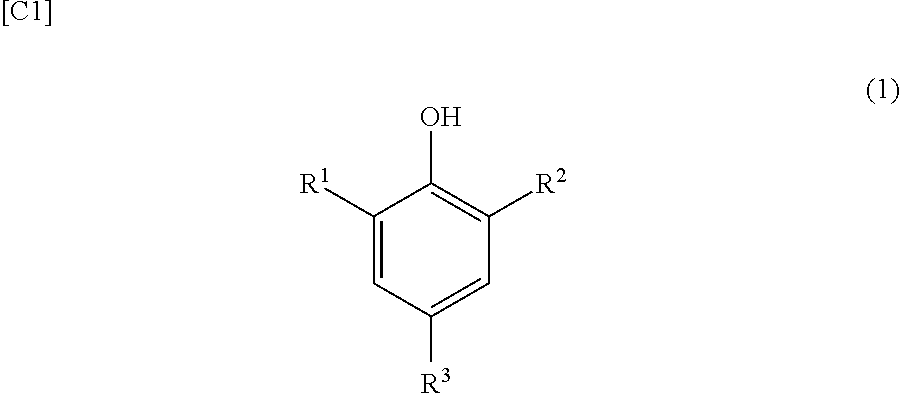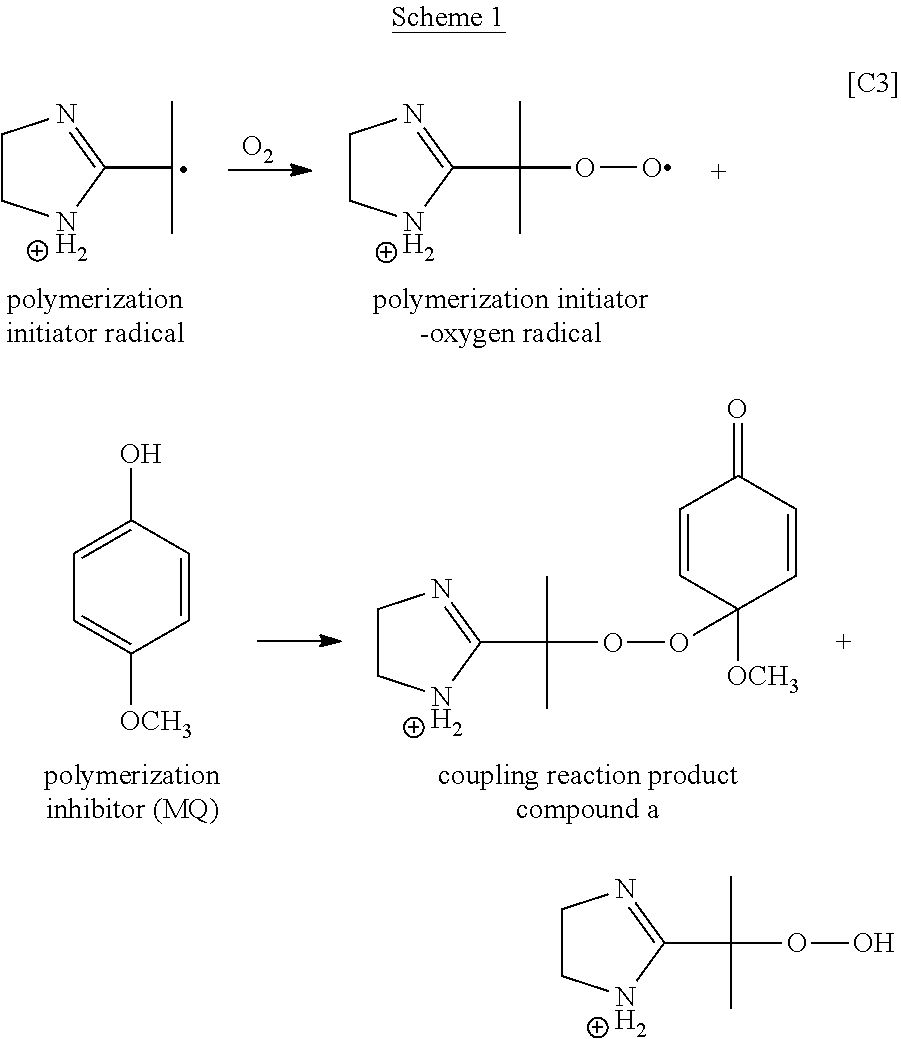Polishing composition and method for producing same
- Summary
- Abstract
- Description
- Claims
- Application Information
AI Technical Summary
Benefits of technology
Problems solved by technology
Method used
Image
Examples
production example 1
[0101]Pure water (390 g) was put into a 1 L flask equipped with a stirrer, a reflux cooling pipe, a thermometer and a nitrogen (or 5% oxygen (based on volume)) inlet pipe. While bubbling nitrogen gas blown into the pure water from the nitrogen inlet pipe (100 ml / min), the system was heated to 90° C. and stirred at the same temperature for 30 minutes. Thereby, oxygen dissolved in the pure water was removed. Next, while continuing nitrogen bubbling, the system was cooled to 60° C., and 2,2′-azobis[2-(2-imidazolin-2-yl)propane]disulfate dehydrate (VA-046B, available from Wako Pure Chemical Industries, Ltd., 0.35 g) was added thereto. Here, N-acryloylmorpholine (ACMO, available from KJ Chemicals Corporation, 100 g) was added dropwise thereto over 3 hours and polymerized. After dropwise addition as completed, stirring was performed at 60° C. while additionally continuing nitrogen bubbling for 1 hour. The system was then heated to 80° C. and stirred for 2.5 hours while performing nitrogen...
production example 2
[0103]A polymerization reaction liquid B as a polymer B aqueous solution was obtained in the same manner as in Production Example 1 except that the amount of the polymerization initiator used was changed to 0.15 g in Production Example 1. The amount of the polymerization inhibitor reduced was 0.04 ppm, and the amount of compound a estimated from the amount of the polymerization inhibitor reduced was 0.13 ppm with respect to the amount of ACMO used.
[0104]200 g of a liquid in Production Example 1 which is after polymerization and immediately after stirring under nitrogen bubbling at 80° C. for 2.5 hours (i.e., the liquid before the initiator treatment), 0.24 g of the polymerization initiator (VA-046B), 0.392 g of the polymerization inhibitor (MQ), and 10 g of water were mixed and the mixture was heated and stirred at 50° C. for 3 days. The liquid obtained from the above operation was referred to as a “stock liquid.”
[0105]The amount of the polymerization inhibitor in the stock liquid w...
example 1
[0106]The polymerization reaction liquid A was mixed with an abrasive, ammonia water (concentration of 29%) and deionized water to obtain a polishing composition concentrate. The concentrate was diluted by a factor of 20 with deionized water to prepare a polishing liquid (working slurry).
[0107]Here, as the abrasive, colloidal silica having an average primary particle size of 35 nm and an average secondary particle size of 60 nm was used. The average primary particle size was measured using a surface area measuring device (product name “Flow Sorb II 2300” available from Micromeritics Instrument Corporation). The average secondary particle size was a volume average particle size based on a dynamic light scattering method measured using a model “UPA-UTI51” (available from Nikkiso Co., Ltd.).
[0108]Regarding the used amounts of the abrasive, polymerization reaction liquid A and ammonia water, the content of the abrasive in the polishing liquid was 0.46%, the content of the polymer A was ...
PUM
| Property | Measurement | Unit |
|---|---|---|
| Fraction | aaaaa | aaaaa |
| Composition | aaaaa | aaaaa |
| Solubility (mass) | aaaaa | aaaaa |
Abstract
Description
Claims
Application Information
 Login to View More
Login to View More - R&D
- Intellectual Property
- Life Sciences
- Materials
- Tech Scout
- Unparalleled Data Quality
- Higher Quality Content
- 60% Fewer Hallucinations
Browse by: Latest US Patents, China's latest patents, Technical Efficacy Thesaurus, Application Domain, Technology Topic, Popular Technical Reports.
© 2025 PatSnap. All rights reserved.Legal|Privacy policy|Modern Slavery Act Transparency Statement|Sitemap|About US| Contact US: help@patsnap.com



